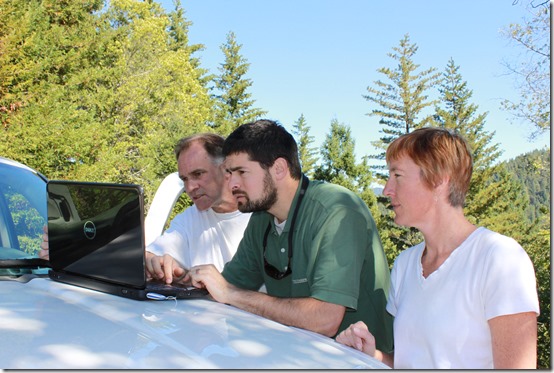Dell wants to give our customers the power to do more. Every day on the Dell sustainability team, we work to minimize the environmental impact of Dell’s operations. But even more important, we help our customers leverage technology to achieve their missions and operate more sustainably. Sometimes, the mission itself is sustainability. I’m posting this on behalf of Jena Thompson Meredith, who shares how Dell technology is helping The Conservation Fund collect, analyze and store data vital to its mission of land conservation.
At The Conservation Fund’s headquarters in Arlington, Va., at least four of my colleagues have ordered standing desks in the past month. Citing the health benefits associated with better posture, stronger core muscles and fewer tight necks and backs, they are busy at work—standing up for our cause to help save America’s favorite places.
Inside the Beltway, teammates gather for staff meetings in a large conference room overlooking Arlington Cemetery. People are formal, efficient, hard-working and dedicated as they greet foundation presidents, CEOs of companies we work with on conservation solutions, or staff on Capitol Hill. Our business-savvy approach yields impressive results. We’ve protected more than 7 million acres of land across the United States in the past 27 years, valued at $5 billion. The Fund is consistently ranked as one of the top-environmental charities nationwide.
Outside the Beltway, at one of our 22 field offices nationwide, we have standing desks too. Although, many of ours are mobile. And while there’s no long boardroom table or floor to ceiling windows, we do have a great view. We gather around laptops and creased, dog-eared maps, precariously positioned on the hood of a pickup truck. Mud boots and all-terrain vehicles are sometimes critical to access a prospective conservation site. Our seat cushions are covered with a thick layer of dust, and everyone knows how to ID poison oak.
This is especially true along the coast of Northern California where The Conservation Fund owns and operates about 60,000 acres of Douglas fir and redwood forests. While some aspects of our field work remains surprisingly low tech—we still measure thousands of trees by hand by wrapping a tape measure around the tree trunk—the vast majority of our work leans heavily on our ability to access reliable and dependable technology. Note: Click on either of the images below to see a larger version.
The Conservation Fund owns and manages approximately 60,000 acres of redwood and Douglas fir forest along California’s north coast. Its forests were several of the first and largest projects in the nation to be verified and registered with the Climate Action Reserve.
We use Dell systems to house all the data we collect, including those tree measurements we craft by hand, as well as high-resolution photos and laser imagery obtained by aircraft. Our forest carbon analysts need powerful systems to model, analyze and forecast forest growth. Reliable access to our data is critical as we count on both timber and carbon income streams from sustainable forest operations to help protect and restore our land.
Across the most ecologically sensitive areas of the forest, harvests are restricted, and Conservation Fund foresters meet with biologists to survey forest stands for endangered species such as the northern spotted owl and streams for coho salmon and steelhead trout. Dell systems ensure the data we collect is consolidated, crunched and analyzed so we can use it for good.
Forester Scott Kelly, carbon analyst Jordan Golinkoff and the north coast program coordinator, Holly Newberger during a Conservation Fund “staff meeting” at the Gualala Forest in Mendocino County, California. Dell technology helps the nonprofit Conservation Fund conserve and then restore the most sensitive areas of the forest, including rivers that and streams important to salmon.
The Conservation Fund has protected more than 400,000 acres in California, including 50,000 acres of forestland. We work hand-in-hand with community and government leaders, businesses, landowners, conservation nonprofits and other partners to save the places that matter most. Together with Dell, we’ve helped to use “technology for good” to not only protect forests, but also to restore them. Dell and its customers have helped The Conservation Fund plant more than 192,000 trees via its Plant a Tree program.
Find our more at: www.conservationfund.org.
As Director of Corporate Partnerships and Director of Go Zero, Jena Thompson Meredith has combined entrepreneurial vision and conservation ideals for a decade at The Conservation Fund.


